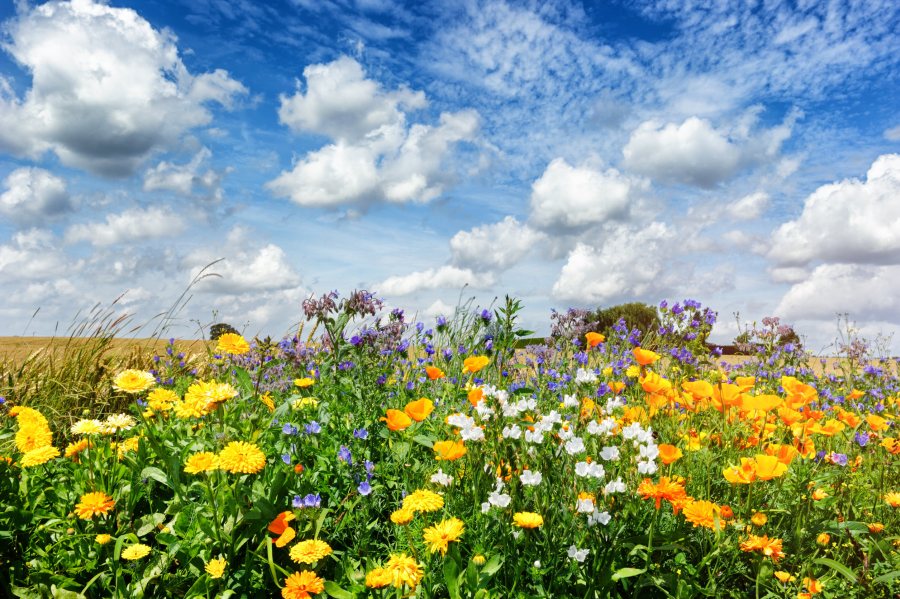
The government has announced a significant rise - of 30% on average - in the payment rates available in the Countryside Stewardship scheme.
Making the announcement at the Oxford Farming Conference, Defra Secretary George Eustice said the government hoped to encourage more applications to a scheme which has been undersubscribed since its launch in 2015.
The new payment rates also reflect some of the cost increases being felt by farmers who deliver environmental benefits on their land.
The increases will not only apply to new agreements starting in 2023, but will also be applied to all existing agreements that started on or before 1 January 2022.
Mr Eustice told attendees at the virtual conference: "On average, we are going to increase rates in Countryside Stewardship by around 30%.
"This sends a powerful signal to farmers that we want them to get involved in Countryside Stewardship.
"For those who are early adopters and have already been engaged in Countryside Stewardship, they will automatically see an increase in the payments they receive for the work that they are already doing.
"But for those who have not yet engaged with Countryside Stewardship - the 40,000 or so who have chosen not to so far, I would urge them all to look again at Countryside Stewardship. We’ve made it simpler."
Some options see a significant rise in payments whilst, for others, payments will actually be reduced.
Any reductions will only apply to new agreements starting in 2023 and will not be applied to existing agreements.
One of the biggest percentage increases will be welcomed by upland farmers. The payment rate for option GS5 – Low Input Grassland Management in SDA – rises from a paltry £16 per ha to a more enticing £71 per ha.
For upland farmers that can manage their land with few inputs, this could finally make Mid-Tier Countryside Stewardship worth applying for.
Option UP2 – Rough Grazing for Birds – is also increased from £88 to £110 per ha, while the Higher Tier UP3 Moorland Management option rises from £43 to £51 per ha.
However, it is not all good news. The GS15 Haymaking Supplement, often partnered with GS5 in traditionally managed upland hay meadows, is being reduced from £85 to £37 per ha.
The importance of native cattle grazing in delivering high quality environmental management in a variety of important habitats is recognised in the increase in the SP8 Native Breeds at Risk Supplement (Higher Tier).
Payments rise by over 50% from £94 to £142 per ha. However, the standard SP6 Cattle Grazing Supplement, which can be used in conjunction with a variety of Mid and Higher Tier options, falls from £45 to £39 per ha for new agreements.
Organic farmers will be pleased to see that most payment rates for organic management are significantly increased, particularly those for enclosed rough grazing, unimproved grassland, and rotational land.
The exception is the payment rate for improved grassland, which is halved from £40 to £20 per ha.
For farmers with arable land, it is a mixed bag. There are increases of 10-17% in many of the popular options, including AB1 – Nectar Flower Mix, AB16 – Autumn-sown Bumblebird Mix and AB8 – Flower Rich Margins.
A £59 per ha increase to £554 means option AB7 – Wholecrop Spring Cereals – remains one of the most attractive options in the Scheme for mixed farms growing wholecrop for cattle feed.
In contrast, the standard AB2 – Over-wintered Stubbles option is reduced by nearly a third to £58 per ha, and AB14 Low Input Cereals is also reduced by £30 per ha.
In a blow to mixed arable/livestock farmers, the AB13 – Brassica Fodder Crop option will no longer be available for new agreements starting in 2023.
Responding to the announcement, Here David Morley, head of conservation for H&H Land & Estates, said that, overall, the changes were a 'positive step'.
"[It] will hopefully encourage more farmers to look at Countryside Stewardship to help them farm in an environmentally sustainable way.
"The best news is that payment increases will not only apply to new agreements starting in 2023 but will also be applied to all existing agreements that started on or before 1 January 2022.
"As always, however, it is critical to get the right advice for your farm business."
